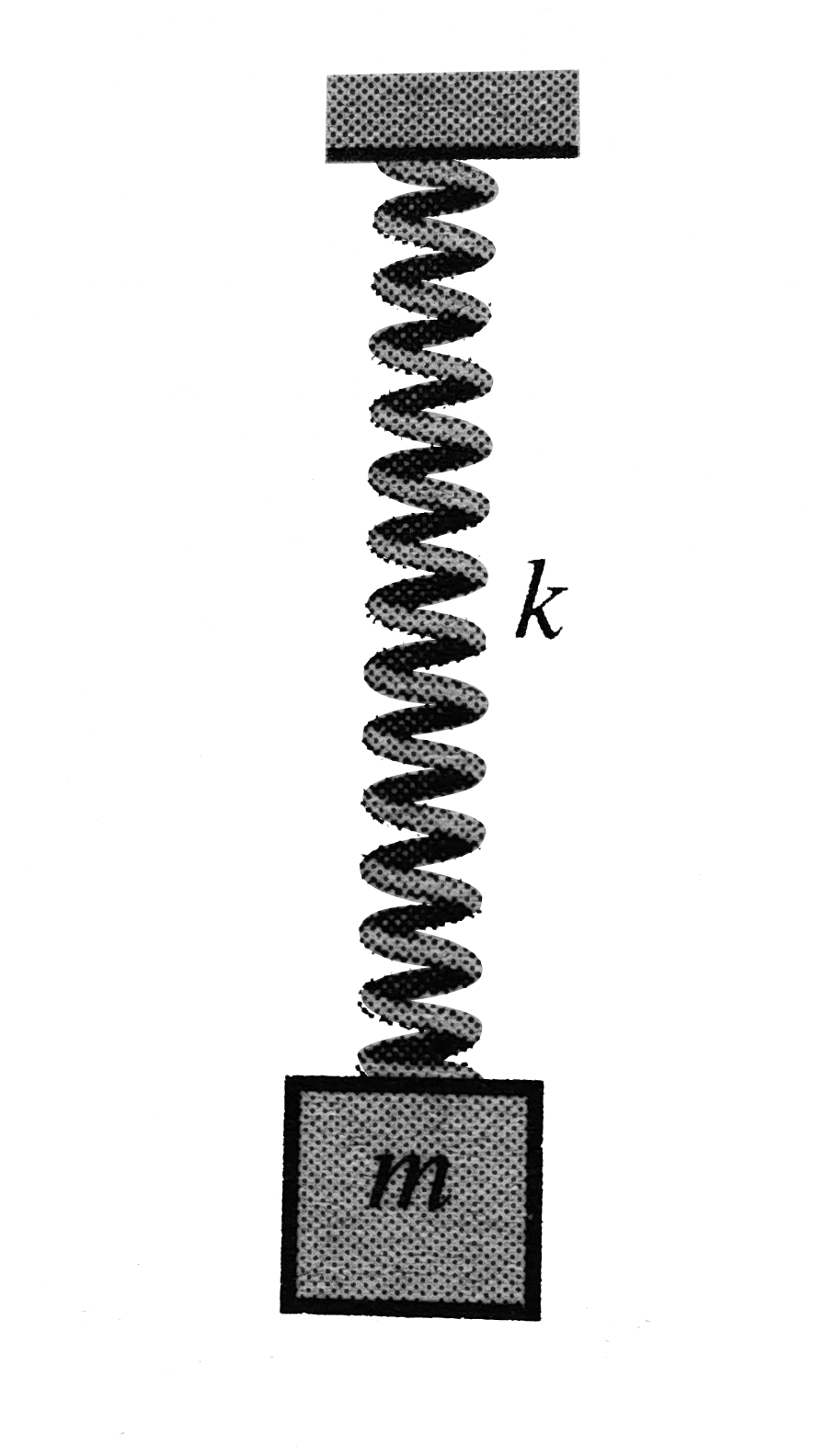A linear harmonic oscillator of force constant 6×105 N/m and amplitude 4cm, has a total energy 600J. Select the correct statement.
Maximum potential energy is 600J
Maximum kinetic energy is 480 J
Minimum potential energy is 120J
All of these
The correct Answer is:D
To solve the problem, we need to analyze the properties of a linear harmonic oscillator. We are given the force constant (k), amplitude (A), and total energy (E) of the oscillator. We will find the maximum kinetic energy (K.E.) and minimum potential energy (P.E.) and check the statements provided.
1. Identify Given Values:
- Force constant, k=6×105N/m
- Amplitude, A=4cm=0.04m
- Total energy, E=600J
2. Calculate Maximum Kinetic Energy:
The maximum kinetic energy in a harmonic oscillator occurs at the mean position (x = 0) and is given by the formula:
K.E.max=12kA2
Substituting the known values:
K.E.max=12×(6×105)×(0.04)2
=12×(6×105)×(0.0016)
=12×960J
=480J
3. Calculate Minimum Potential Energy:
The total energy in a harmonic oscillator is conserved and can be expressed as:
E=K.E.+P.E.
At the maximum displacement (x = A), all energy is potential, and at the mean position (x = 0), all energy is kinetic. Thus, we can write:
E=K.E.max+P.E.min
Rearranging gives:
P.E.min=E−K.E.max
Substituting the known values:
P.E.min=600J−480J=120J
4. Calculate Maximum Potential Energy:
The maximum potential energy occurs at maximum displacement (x = A):
P.E.max=E
Therefore, the maximum potential energy is:
P.E.max=600J
5. Conclusion:
- Maximum Kinetic Energy = 480 J
- Minimum Potential Energy = 120 J
- Maximum Potential Energy = 600 J
Final Answer:
All the statements provided in the question are correct:
1. Maximum potential energy = 600 J
2. Maximum kinetic energy = 480 J
3. Minimum potential energy = 120 J
- Force constant, k=6×105N/m
- Amplitude, A=4cm=0.04m
- Total energy, E=600J
The maximum kinetic energy in a harmonic oscillator occurs at the mean position (x = 0) and is given by the formula:
K.E.max=12kA2
Substituting the known values:
K.E.max=12×(6×105)×(0.04)2
=12×(6×105)×(0.0016)
=12×960J
=480J
The total energy in a harmonic oscillator is conserved and can be expressed as:
E=K.E.+P.E.
At the maximum displacement (x = A), all energy is potential, and at the mean position (x = 0), all energy is kinetic. Thus, we can write:
E=K.E.max+P.E.min
Rearranging gives:
P.E.min=E−K.E.max
Substituting the known values:
P.E.min=600J−480J=120J
The maximum potential energy occurs at maximum displacement (x = A):
P.E.max=E
Therefore, the maximum potential energy is:
P.E.max=600J
- Maximum Kinetic Energy = 480 J
- Minimum Potential Energy = 120 J
- Maximum Potential Energy = 600 J
All the statements provided in the question are correct:
1. Maximum potential energy = 600 J
2. Maximum kinetic energy = 480 J
3. Minimum potential energy = 120 J
Topper's Solved these Questions
- OSCILLATIONSBOOK - AAKASH INSTITUTE ENGLISHCHAPTER - OSCILLATIONSEXERCISE - Assignment (Section C) (PREVIOUS YEARS QUESTIONS)
43 Videos
- OSCILLATIONSBOOK - AAKASH INSTITUTE ENGLISHCHAPTER - OSCILLATIONSEXERCISE - Assignment (Section D) (ASSERTION-REASON TYPE QUESTIONS)
13 Videos
- OSCILLATIONSBOOK - AAKASH INSTITUTE ENGLISHCHAPTER - OSCILLATIONSEXERCISE - Assignment (Section - A) (OBJECTIVE TYPE QUESTIONS)
60 Videos
- NUCLEIBOOK - AAKASH INSTITUTE ENGLISHCHAPTER - NUCLEIEXERCISE - ASSIGNMENT (SECTION-D)
10 Videos
- PHYSICAL WORLDBOOK - AAKASH INSTITUTE ENGLISHCHAPTER - PHYSICAL WORLDEXERCISE - ASSIGNMENT (Section-B)
4 Videos
Similar Questions
Knowledge Check
A simple harmonic oscillator has a frequency of 2.5 Hz and an amplitude of 0.05m. What is the period of the oscillations?
A0.4sB0.2sC8sD20sA simple harmonic oscillator has a period T and energy E. the amplitude of the oscillator is doubled. Choose the correct answer.
APeriod and energy get doubled.BPeriod gets doubled while energy remains the same.CEnergy gets doubled while period remains the same.Dperiod remains the same and energy becomes four times.
A linear harmonic oscillator of force constant 2×106N/m and amplitude 0.01m has a total mechanical energy of 160J. Its
View SolutionA linear harmonic oscillator of force constant 2×106N/m and amplitude (0.01 m) has a total mechanical energy of (160 J). Its.
View SolutionA linear harmonic oscillator of force constant 2×106N/m and amplitude (0.01 m) has a total mechanical energy of (160 J). Its.
View SolutionA harmonic oscillation of force constant 4×106Nm−1 and amplitude 0.01 m has total energy 240 J. What is maximum kinetic energy and minimum potential energy?
View Solution
For the spring pendulum shown in fig. the value of spring constant is 3×104Nm and amplitude of oscillation is 0.1m. The total mechanical energy of oscillating system is 200 J. Mark out the correct option (s).
View SolutionA standing wave is created on a string of length 120m and it is vibrating in 6th harmonic. Maximum possible amplitude of any particle is 10cm and maximum possible velocity will be 10cm/s. Choose the correct statement.
View Solution
